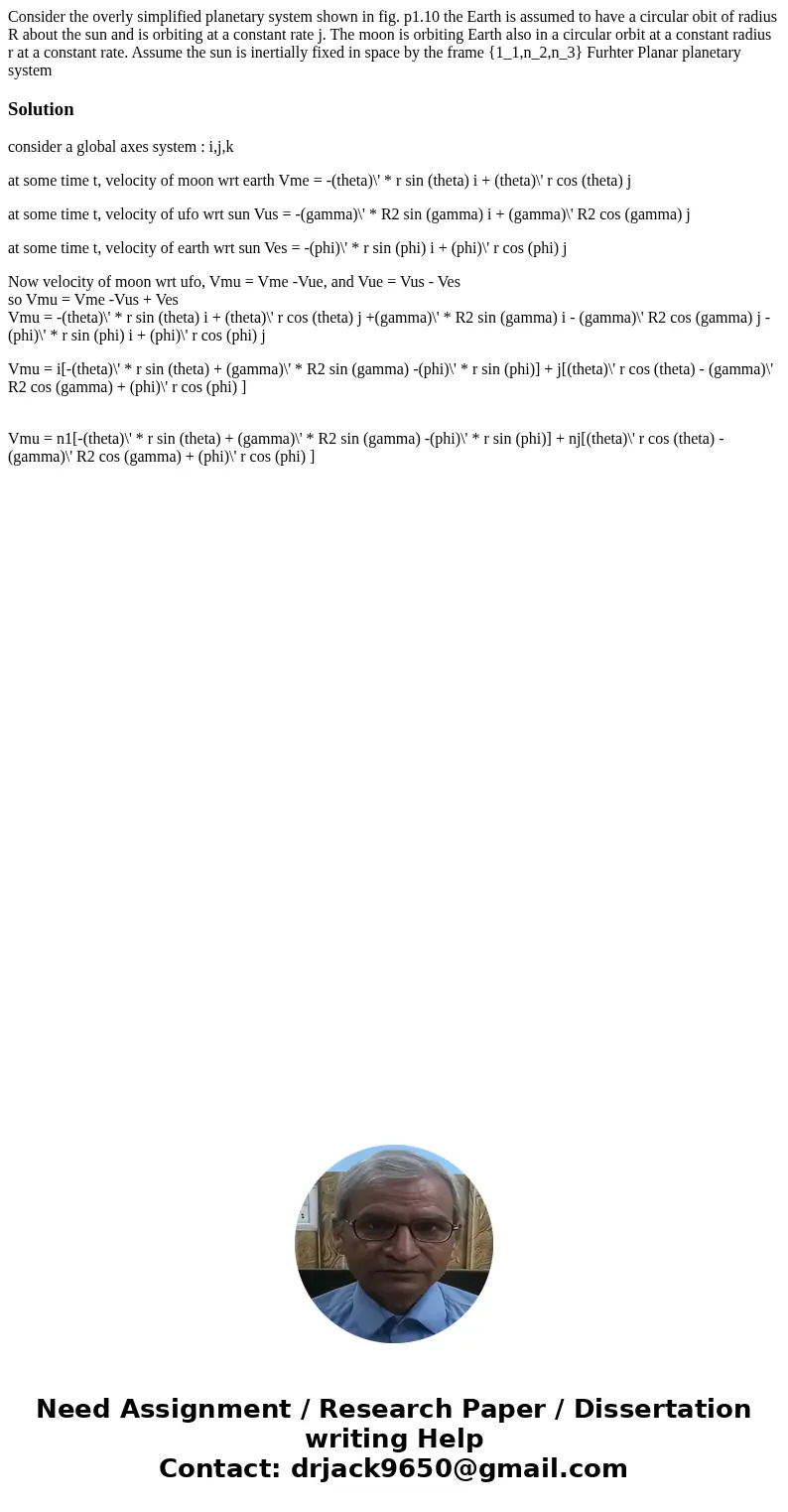Consider the overly simplified planetary system shown in fig
Solution
consider a global axes system : i,j,k
at some time t, velocity of moon wrt earth Vme = -(theta)\' * r sin (theta) i + (theta)\' r cos (theta) j
at some time t, velocity of ufo wrt sun Vus = -(gamma)\' * R2 sin (gamma) i + (gamma)\' R2 cos (gamma) j
at some time t, velocity of earth wrt sun Ves = -(phi)\' * r sin (phi) i + (phi)\' r cos (phi) j
Now velocity of moon wrt ufo, Vmu = Vme -Vue, and Vue = Vus - Ves
so Vmu = Vme -Vus + Ves
Vmu = -(theta)\' * r sin (theta) i + (theta)\' r cos (theta) j +(gamma)\' * R2 sin (gamma) i - (gamma)\' R2 cos (gamma) j -(phi)\' * r sin (phi) i + (phi)\' r cos (phi) j
Vmu = i[-(theta)\' * r sin (theta) + (gamma)\' * R2 sin (gamma) -(phi)\' * r sin (phi)] + j[(theta)\' r cos (theta) - (gamma)\' R2 cos (gamma) + (phi)\' r cos (phi) ]
Vmu = n1[-(theta)\' * r sin (theta) + (gamma)\' * R2 sin (gamma) -(phi)\' * r sin (phi)] + nj[(theta)\' r cos (theta) - (gamma)\' R2 cos (gamma) + (phi)\' r cos (phi) ]

 Homework Sourse
Homework Sourse